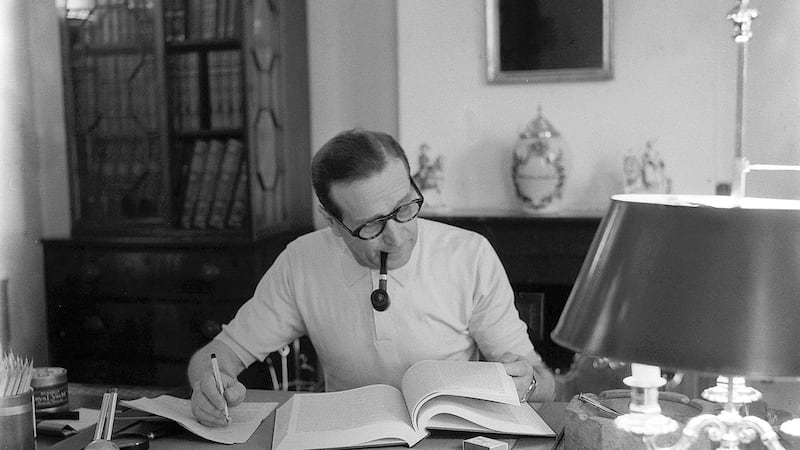
In the middle of this triptych of collected work, there’s a substantial essay about Californian photographer Annie Appel. One of Appel’s projects – a sort of visual durational art – has been to photograph the same Mexican family for three decades, through separations, addiction and violence. The images are full of children, poverty and love. Jamison calls this collaborative circling a “process of intimate entanglement”, and while the essay serves her admiration for Appel’s work, it also acts as a metaphor for what Jamison does as an essayist, delving into other people’s experience and reassembling a narrative on the page.
Make It Scream, Make It Burn pulls together pieces published over the last five years, presenting the variety of subjects her gaze has rested on. Jamison consistently gravitates towards the peripheral: landscapes, emotions, people on the outside.
As with her debut essay collection, The Empathy Exams, this book is both interior and exterior, casting outwards for themes and meaning, parsed by Jamison’s deep empathy and intelligence. She is aware of the contradiction of who gets to tell other people’s stories – lovers, family, strangers – “What does it mean to make art from other people’s lives?” she asks. She quotes Janet Malcolm: “Like the credulous widow who wakes up to find the charming young man and all her savings gone, so the consenting subject of a piece of non-fiction learns – when the article or book appears – his hard lesson.”
Every story seems singular to the person who experiences it, until the realisation that it has already happened to many
The latter is noticeably absent in Jamison’s work, because like most writers she is more interested in the bones of a story, not the pay-off. The possibilities and absences. What a story can do provides a title (albeit one borrowed from Joan Didion) for an essay on reincarnation. In We Tell Ourselves Stories in Order to Live Again, she meets a boy who has nightmares about plane crashes and whose family says he is the reincarnation of a pilot shot down in the second World War near Japan. His father believes it, the pilot’s sister does too, and Jamison wants to, even though she cringes when she describes this as “openness to mystery”. What the writer learns from the encounter is “what I was struggling to accept about living at all: that nothing we’ve lived was unique, that we were always – in some sense – living again.”
Every story seems singular to the person who experiences it, until the realisation that it has already happened to many. It’s one of the reasons people connect with essays. In transposing their own experience on to someone else’s narrative, they find a moment of recognition. Sometimes it heals; sometimes it offers permission to speak their own truth.
The book’s distinct sections, Longing, Looking, Dwelling, provide three ways of asking questions, something every essay should do. Longing stares at the horizon of other people’s lives, while Looking focuses on the photography and reportage of Appel, James Agee’s landmark book Let Us Now Praise Famous Men and Civil War photography. Here, Jamison’s interrogative nous is at its most intense. There’s a lot of information, but ultimately it reflects her consistent line of enquiry throughout. Pictures of Civil War carnage prompt her to ask, perhaps in reference to any act of writing: “Can photographs offer what other forms of expression cannot manage?
The ghost of her college eating disorder resurface as she assesses the contrasts of what is expected of women's bodies: thinness, pregnancy, 'staying within its boundaries'
The word “personal” frequently prefixes “essay”, but usually only when such work is written by women. The last section, Dwelling, occupies this realm, and it’s where Jamison’s exceptional voice and the humanity of her writing comes into its own. As with the ever-shifting world, there are two essays written at different times, but when read here side by side, display the unknowableness of how any of our lives will turn out. Jamison was stepmother to her ex-husband’s daughter, and combines her own experience with representations of stepmothers, from fairytales to fiction. She doesn’t feel like an evil archetype, but “an impostor – I felt the particular loneliness of dwelling outside the bounds of the most familiar storyline”.
The book concludes with The Quickening, the story of the birth of Jamison’s biological daughter. It’s a panicked and precise piece of work, the emotional equivalent of walking a precarious ledge. The ghost of her college eating disorder resurface as she assesses the contrasts of what is expected of women’s bodies: thinness, pregnancy, “staying within its boundaries”.
The book’s title recalls the importance of stories not just to be told, but to be heard. Jamison interleaves her own narrative with others, recounting milestone life events while amplifying voices that aren’t loud enough (and in one case, a whale). Perhaps all writing is an innate, primal scream, and Jamison – astutely – knows and embodies this with compassion and vigour.
















